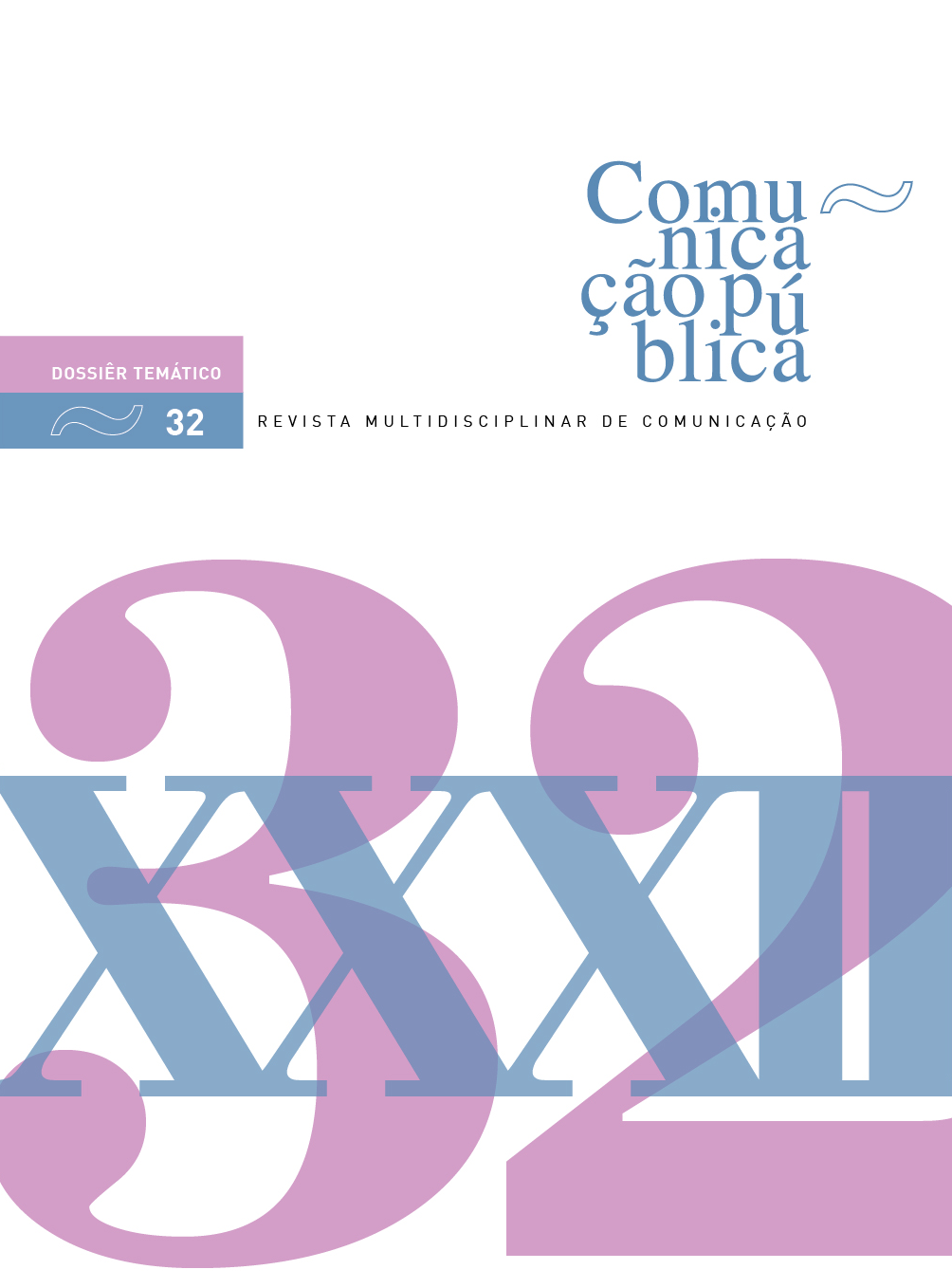Public communication of science on Facebook
the strategies of a Brazilian university in a pandemic context
DOI:
https://doi.org/10.34629/cpublica.241Keywords:
UERJ, virtual social networks, media visibility, covid-19, fake newsAbstract
The purpose of this article is to map the communication effort undertaken by the State University of Rio de Janeiro on Facebook during the first three months of the new coronavirus pandemic, from March to May 2020. The methodology used was content analysis, which allowed the classification of posts in categories, in an attempt to understand how the University uses the social network to reinforce its concept image as a producer of knowledge in line with the demands of society.
Downloads
References
Bardin, L. (2011). Análise de conteúdo. Edições 70.
Bolter, J. & Grusin, R. (2000). Remediation: Understanding new media. The MIT Press.
Botei, M. (2017). Mis information with fake news. Transilvania University of Brasov. Series VII, Social Sciences Law, 10(2), 133-140.
Bourdieu, P. (1989). O poder simbólico. Bertrand.
Brüggemann, M., Lörcher, I. & Walter, S. (2020). Post-normal science communication: Exploring the blurring boundaries of science and journalism. Journal of Science Communication, 19(3), 1-22.
Bueno, W. (2010). Comunicação científica e divulgação científica: Aproximações e rupturas conceituais. Revista Informação & Informação, 15(1). https://www.uel.br/revistas/uel/index.php/informacao/article/view/6585/6761
De Grandi, M. & Flores, N. (2020). Estratégias de engajamento de pesquisadores nas mídias sociais do periódico ciência rural. Revista do Edicc, 6(1), 311-322.
Duarte, J. (2003). Instituições científicas: Da divulgação à comunicação. Revista Universitas/Comunicação, 1(1), 47-53.
Duarte, J. (2007). Comunicação pública – estado, mercado, sociedade e interesse público. Atlas.
ERC (2019). A Desinformação—Contexto Europeu e Nacional. https://www.parlamento.pt/Documents/2019/abril/desinformacao_contextoeuroeunacional-ERC-abril2019.pdf
Gomes, V. B. (2021). Analogias populistas na narrativa presidencial: Contrapontos à ciência na Pandemia da COVID-19 [tese de doutoramento não publicada]. Universidade Paulista.
Jaramillo, J. C. (2003). Experiencia de la comunicación pública. La Iniciativa de Comunicación. https://www.comminit.com/la/content/experiencia-de-la-comunicaci%C3%B3n-p%C3%BAblica
Marchiori, M. (2008). Cultura e comunicação organizacional: Um olhar sobre a organização. Difusão.
Mintz, A. P. (2002). Web of deception: Mis informationon the Internet. Information Today.
Opas. (2020). Entenda a infodemia e a desinformação na luta contra a COVID-19. https://iris.paho.org/handle/10665.2/52054
Pessoa, S. (2003). Comunicação empresarial, uma ferramenta. Bibliotecas On-line de Ciências da Comunicação. http://www.bocc.ubi.pt/pag/pessoa-sonia-comunicacao-empresarial-estrategica.pdf
UNESCO. (2020). Startling digital divides in distancelearning emerge. UNESCO. https://en.unesco.org/news/startling-digital-divides-distance-learning-emerge
Valente, J. C. L. (2019). Regulando desinformação e fake news: Um panorama internacional das respostas ao problema. Comunicação Pública, 14(7). https://journals.openedition.org/cp/5262?lang=es
Downloads
Published
Issue
Section
License
Copyright (c) 2022 Copyright (c) 2022 Author and Comunicação Pública

This work is licensed under a Creative Commons Attribution-NonCommercial 4.0 International License.
Os conteúdos da Comunicação Pública estão licenciados com uma licença Creative Commons - Atribuição-NãoComercial 4.0 Internacional.


